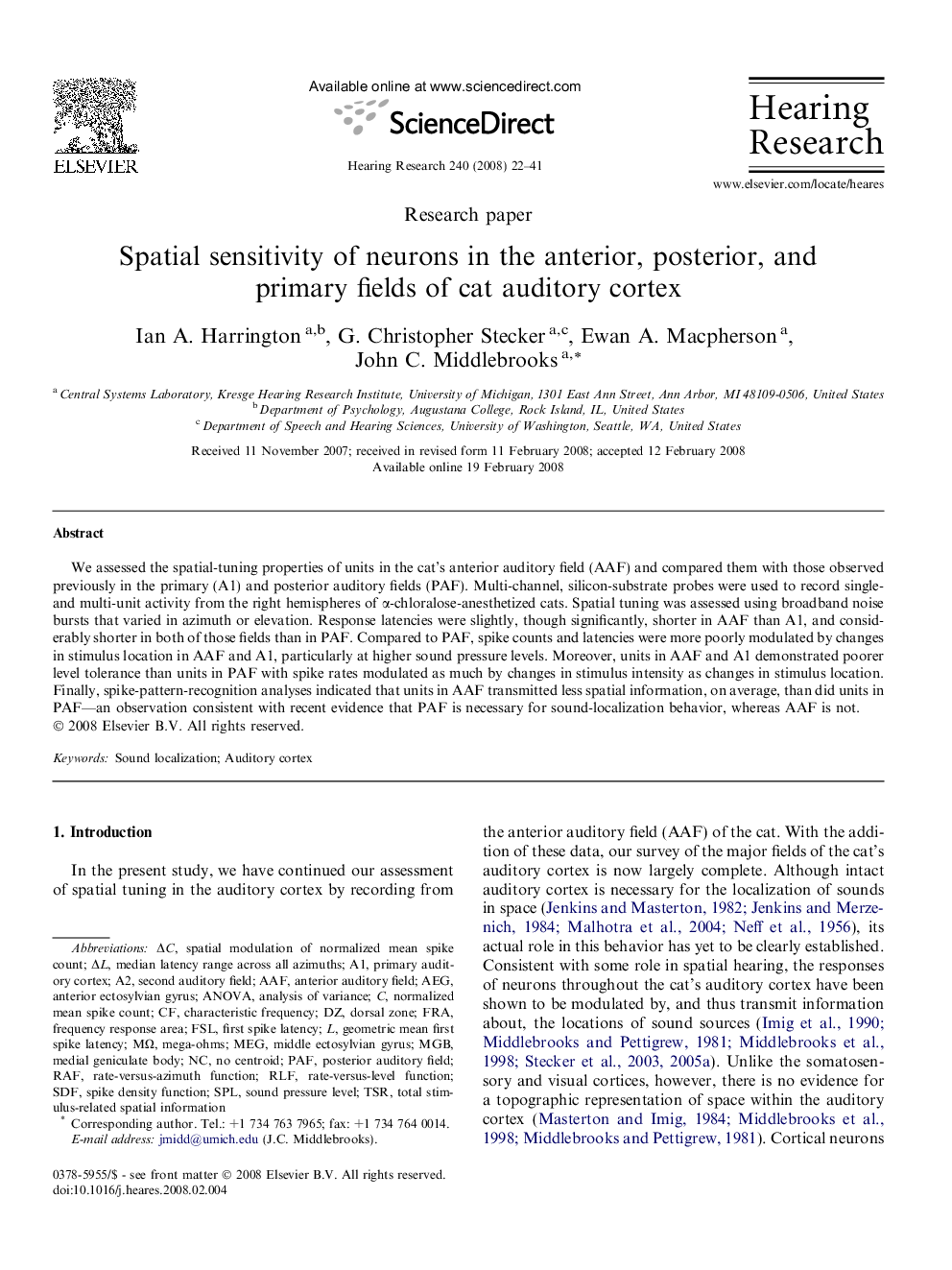| Article ID | Journal | Published Year | Pages | File Type |
|---|---|---|---|---|
| 4356003 | Hearing Research | 2008 | 20 Pages |
We assessed the spatial-tuning properties of units in the cat’s anterior auditory field (AAF) and compared them with those observed previously in the primary (A1) and posterior auditory fields (PAF). Multi-channel, silicon-substrate probes were used to record single- and multi-unit activity from the right hemispheres of α-chloralose-anesthetized cats. Spatial tuning was assessed using broadband noise bursts that varied in azimuth or elevation. Response latencies were slightly, though significantly, shorter in AAF than A1, and considerably shorter in both of those fields than in PAF. Compared to PAF, spike counts and latencies were more poorly modulated by changes in stimulus location in AAF and A1, particularly at higher sound pressure levels. Moreover, units in AAF and A1 demonstrated poorer level tolerance than units in PAF with spike rates modulated as much by changes in stimulus intensity as changes in stimulus location. Finally, spike-pattern-recognition analyses indicated that units in AAF transmitted less spatial information, on average, than did units in PAF—an observation consistent with recent evidence that PAF is necessary for sound-localization behavior, whereas AAF is not.
